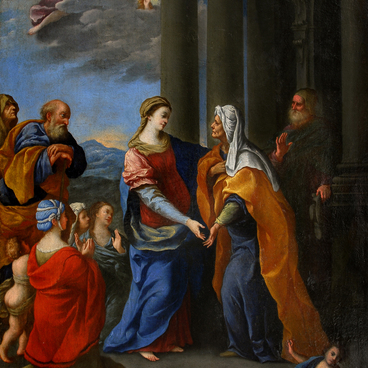The era of intense class struggle, Reformation, and Peasant War in Germany led to stagnation in the spiritual and cultural life of the country, and it was not until the 17th–18th centuries that German art again took a significant place in the European culture.
The painting on display, originating from the famous collection of the House of Golitsyn, dates back to the 18th century; this is “Portrait of an Old Woman” by Christian Seybold, close in artistic method to the traditions of Dutch art, which had a significant influence on many European schools of painting in the 17th century.
Christian Seybold was a German painter whose work is close to the art of the Baroque. Very little is known about his childhood and education. He was born in Neuenhain in 1695. He was one of eleven children in the family. After moving to Vienna, he married in 1715. Soon his wife and child died.
Christian Seybold was a member of the Academy of Fine Arts: it is noted in the documents that as early as 1718, he began to engage in portrait painting. In 1749, Empress Maria Theresa awarded him the title of court painter.
Christian developed his style of painting naturalistic portraits under the influence of artists of that time: the German portrait painter Balthasar Denner and the Czech portrait and history painter Jan Kupecký. It was completely different from the typical manner in which court artists worked, idealizing those who paid generously.
In the mature period of his work, Christian Seybold abandoned the magnificent manner characteristic of the Baroque and came to realistic portraits of detailed elaboration and extraordinary psychological depth.
The 18th century was the age of reason and enlightenment. The artists of the time attached great importance to feeling, the focus of the noblest aspirations of a human being. Quite often, the characters of the works were common, so-called “small people”, living modestly and not spoiled by wealth. Artists admired their sincerity of feelings and the spontaneity of their soul movements.
The works of Christian Seybold reveal the artist’s imitation of his teacher Balthasar Denner, who liked to depict elderly people.
The painting on display, originating from the famous collection of the House of Golitsyn, dates back to the 18th century; this is “Portrait of an Old Woman” by Christian Seybold, close in artistic method to the traditions of Dutch art, which had a significant influence on many European schools of painting in the 17th century.
Christian Seybold was a German painter whose work is close to the art of the Baroque. Very little is known about his childhood and education. He was born in Neuenhain in 1695. He was one of eleven children in the family. After moving to Vienna, he married in 1715. Soon his wife and child died.
Christian Seybold was a member of the Academy of Fine Arts: it is noted in the documents that as early as 1718, he began to engage in portrait painting. In 1749, Empress Maria Theresa awarded him the title of court painter.
Christian developed his style of painting naturalistic portraits under the influence of artists of that time: the German portrait painter Balthasar Denner and the Czech portrait and history painter Jan Kupecký. It was completely different from the typical manner in which court artists worked, idealizing those who paid generously.
In the mature period of his work, Christian Seybold abandoned the magnificent manner characteristic of the Baroque and came to realistic portraits of detailed elaboration and extraordinary psychological depth.
The 18th century was the age of reason and enlightenment. The artists of the time attached great importance to feeling, the focus of the noblest aspirations of a human being. Quite often, the characters of the works were common, so-called “small people”, living modestly and not spoiled by wealth. Artists admired their sincerity of feelings and the spontaneity of their soul movements.
The works of Christian Seybold reveal the artist’s imitation of his teacher Balthasar Denner, who liked to depict elderly people.


